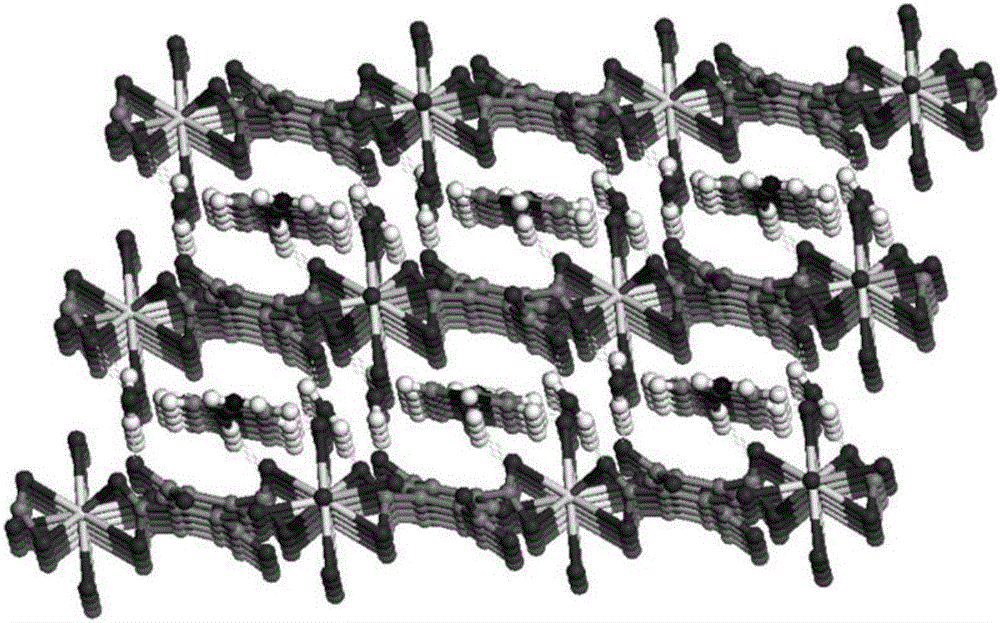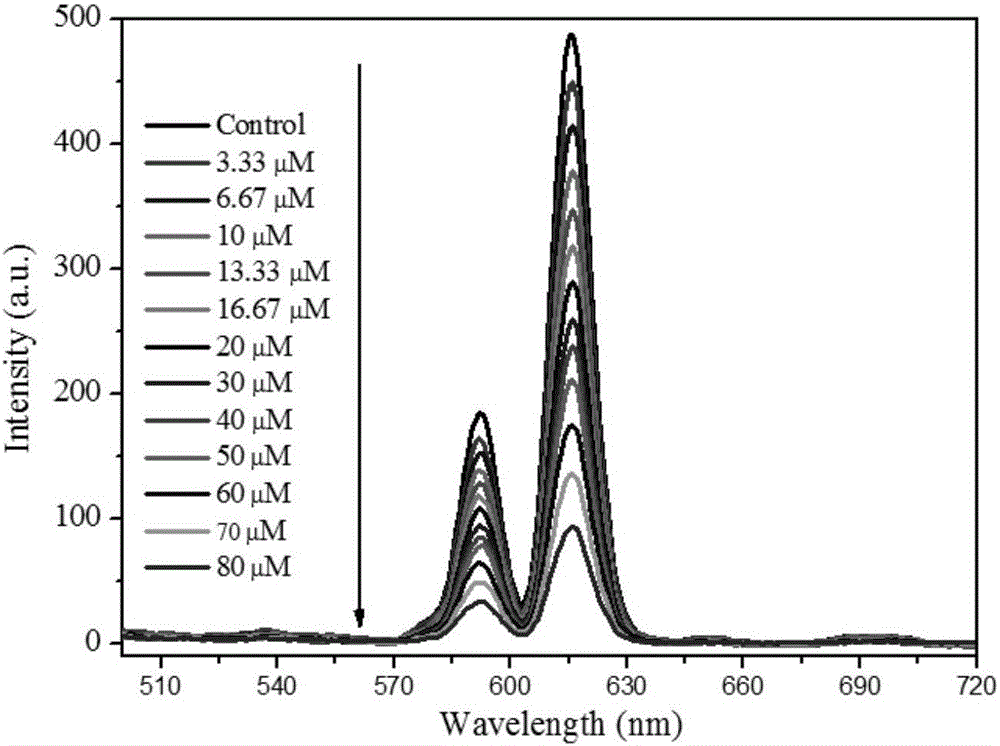Preparation method and application of europium coordination polymer for visible detection on p-nitrophenol and iron ion
A technology of coordination polymers and p-nitrophenol, which is applied in measuring devices, chemical recovery, instruments, etc., to achieve high selectivity, fast and accurate detection, and good application prospects
- Summary
- Abstract
- Description
- Claims
- Application Information
AI Technical Summary
Problems solved by technology
Method used
Image
Examples
Embodiment 1
[0029] Weigh 0.174g of sodium dodecylbenzenesulfonate and add it to 12mL of deionized water, then add 0.223g of europium nitrate hexahydrate, 0.254g of 1,2,4,5-pyromellitic acid and 0.094g of 4 - Aminopyridine, stirred at room temperature for 30 minutes, crystallized at 160° C. for 48 hours, naturally cooled to room temperature, filtered, washed with water, and dried to obtain a europium coordination polymer. Select a coordination polymer single crystal with a suitable size, use the German Bruker ApexCCD single crystal X-ray diffractometer, use graphite as the monochromator, and use MoKα Target, the test temperature is (293±2)K, in the range of 2.30°figure 1 .
[0030] The prepared europium coordination polymer is dispersed in ethanol solution, and the test fluorescence intensity is I 0 , add different amounts of p-nitrophenol (4-NP) successively, its fluorescence intensity is 1, can obtain the working curve of detection. like image 3 and Figure 4 As shown, it can be se...
Embodiment 2
[0032] Weigh 0.182g of cetyltrimethylammonium bromide into 12mL of deionized water, add 0.223g of europium nitrate hexahydrate, 0.254g of 1,2,4,5-pyromellitic acid and 0.188g 4-aminopyridine, stirred at room temperature for 30min, crystallized at 160°C for 48h, naturally cooled to room temperature, filtered, washed with water, and dried to obtain a europium coordination polymer, such as figure 2 As shown, the peak position of the experimental sample and the simulated X-ray powder diffraction are basically the same. The prepared europium coordination polymer is dispersed in ethanol solution, and the test fluorescence intensity is I 0 , followed by adding different amounts of FeCl 3 solution, its fluorescence intensity is I, and the working curve of detection can be obtained; the test results show that with the continuous increase of the amount of substance, its fluorescence intensity gradually decreases, see Image 6 and 7 shown. Add and drop other interfering metal ions o...
Embodiment 3
[0034] 0.120g of polyethylene oxide-polypropylene oxide-polyethylene oxide triblock copolymer (P123) was dissolved in 12mL of deionized water, 0.446g of europium nitrate hexahydrate, 0.254g of pyromellitic acid and 0.188g of 4-aminopyridine was prepared into a mixed solution, stirred at room temperature for 30 minutes, crystallized at 160°C for 48 hours, naturally cooled to room temperature, filtered, washed with water, and dried to obtain a europium coordination polymer. Disperse the prepared europium coordination polymer in ethanol solution, stir ultrasonically for 15 min, and slowly filter with solvent filter and chromatographic filter paper, so that the coordination polymer is evenly adsorbed on the chromatographic filter paper, and wash repeatedly with deionized water until washed. There is no fluorescence in the liquid; put the prepared test paper in a vacuum drying oven at 50°C to dry, then cut it into 1.5cm×1.5cm size and put it in a plastic bag for future use. Add p-n...
PUM
 Login to View More
Login to View More Abstract
Description
Claims
Application Information
 Login to View More
Login to View More - R&D
- Intellectual Property
- Life Sciences
- Materials
- Tech Scout
- Unparalleled Data Quality
- Higher Quality Content
- 60% Fewer Hallucinations
Browse by: Latest US Patents, China's latest patents, Technical Efficacy Thesaurus, Application Domain, Technology Topic, Popular Technical Reports.
© 2025 PatSnap. All rights reserved.Legal|Privacy policy|Modern Slavery Act Transparency Statement|Sitemap|About US| Contact US: help@patsnap.com



